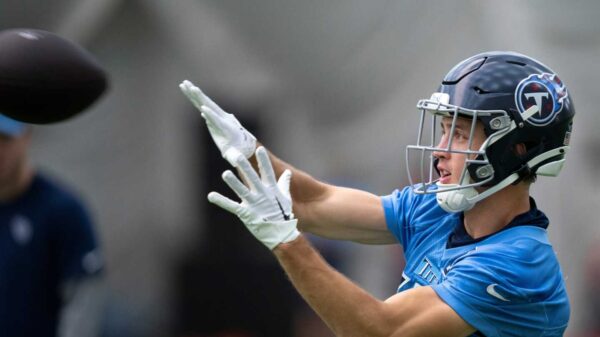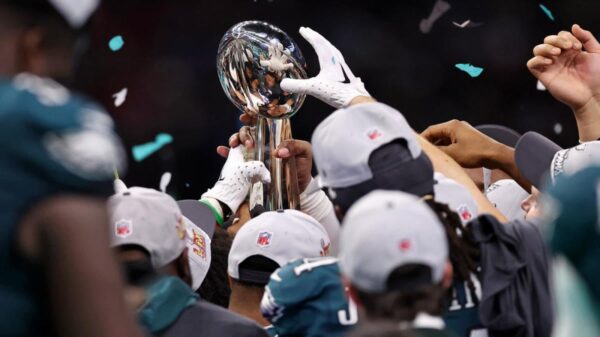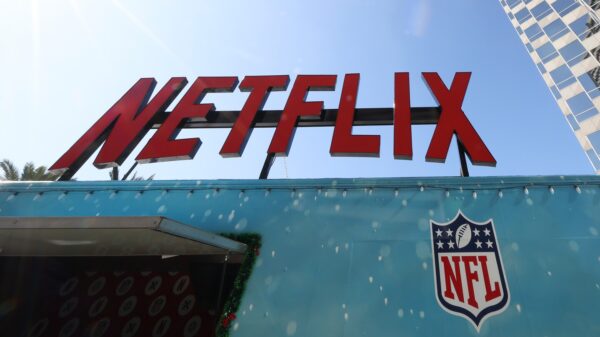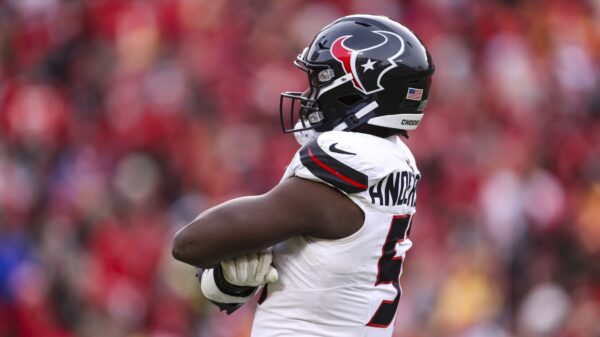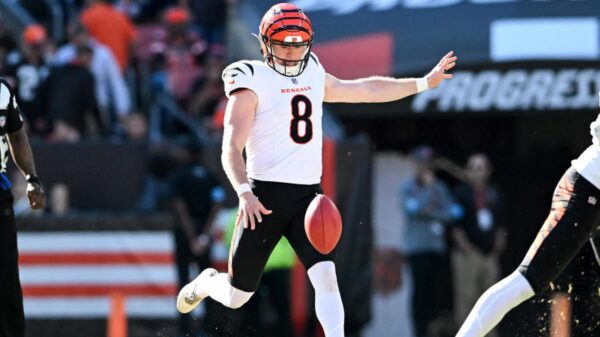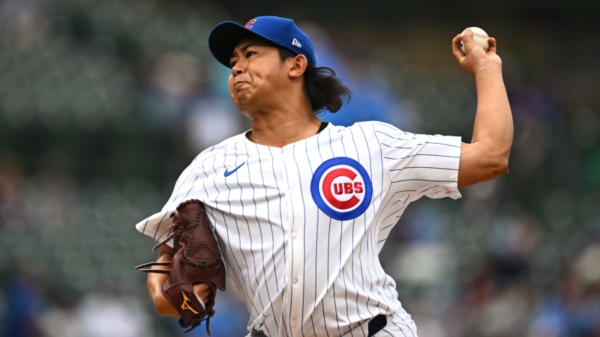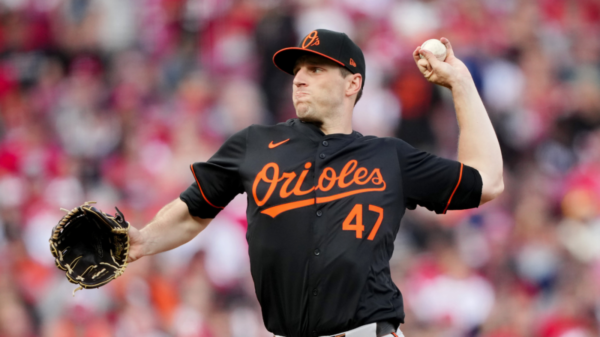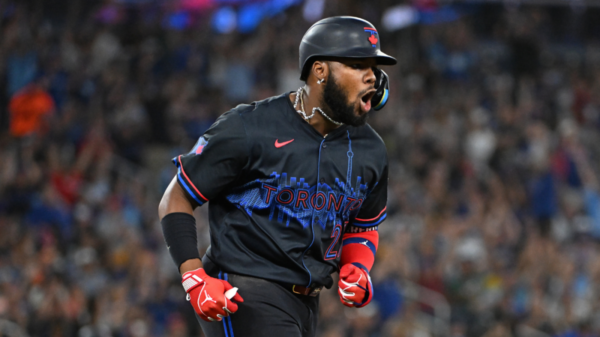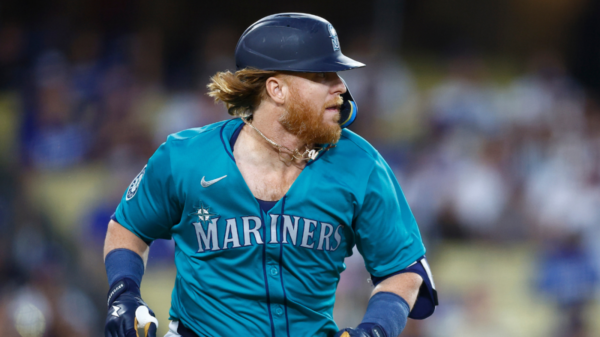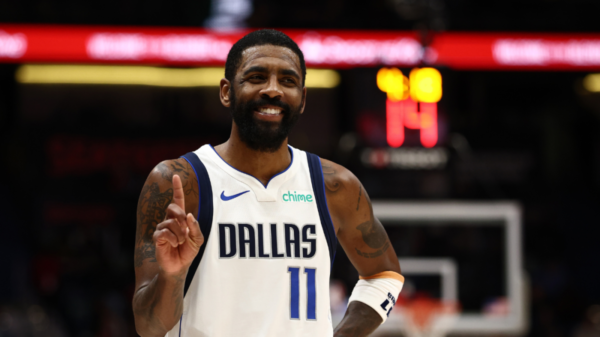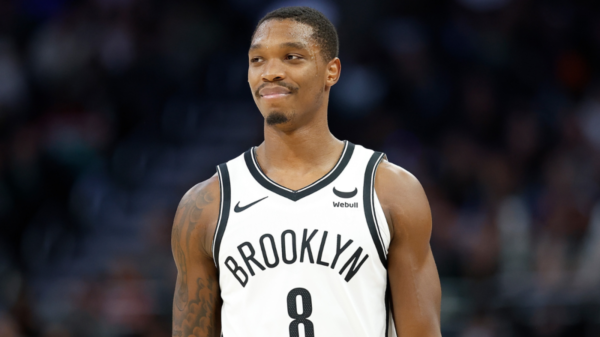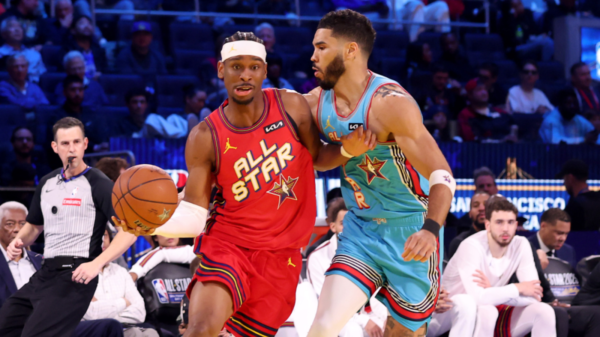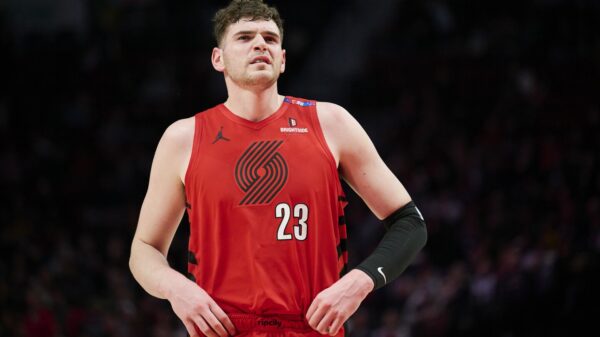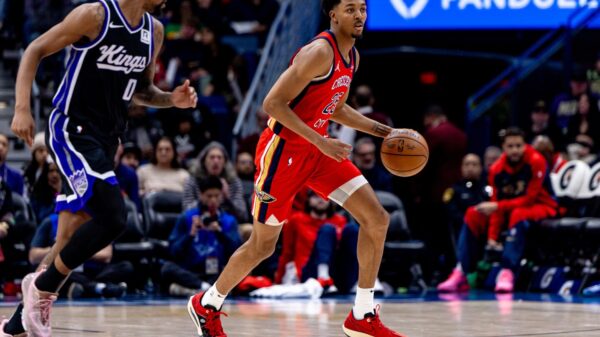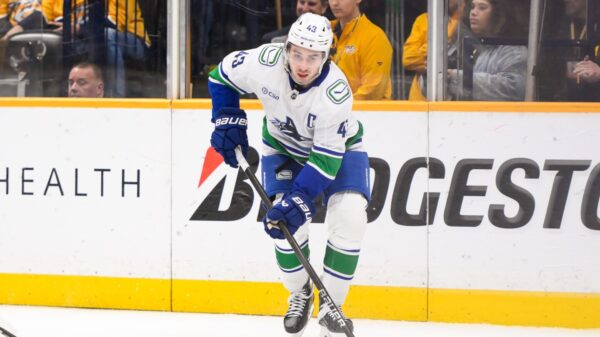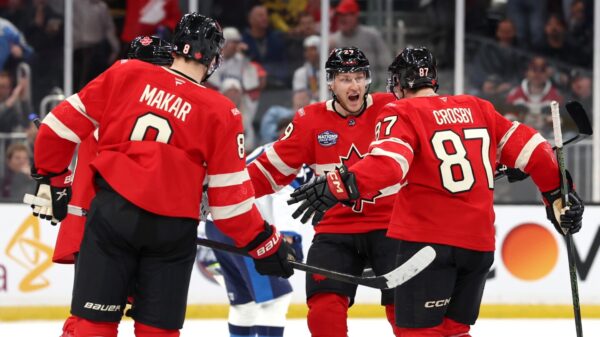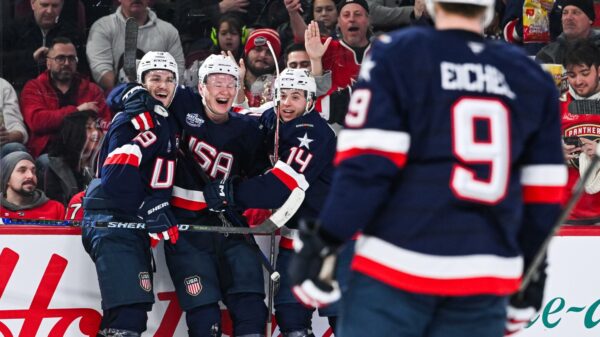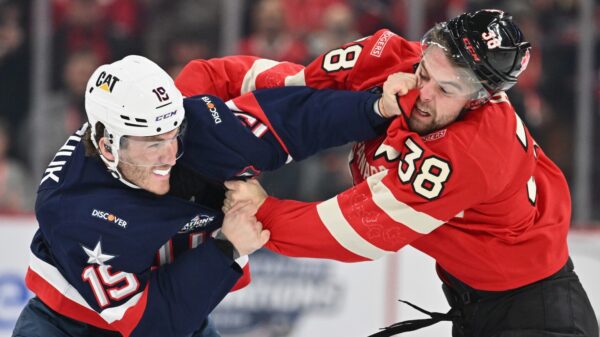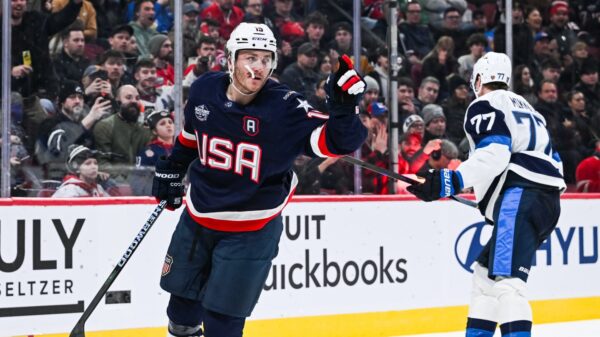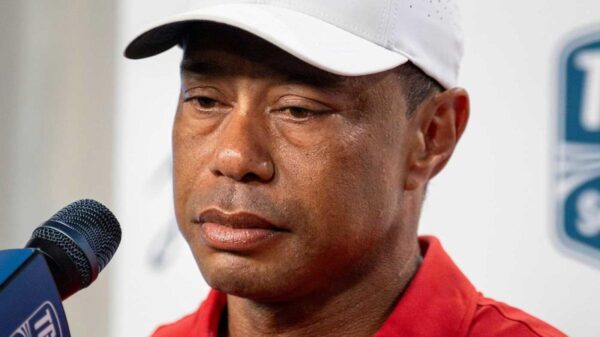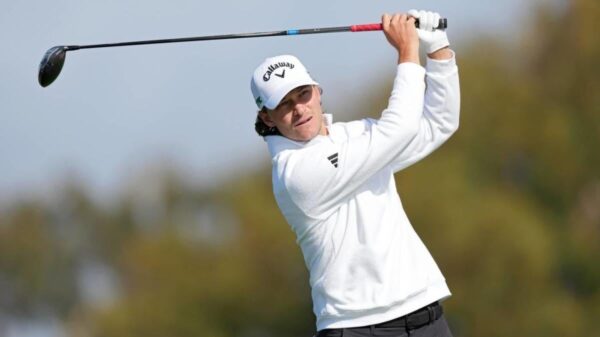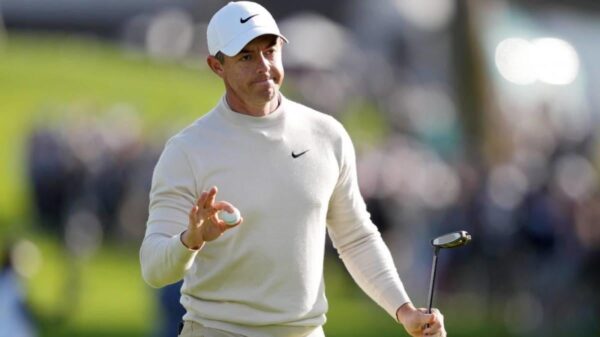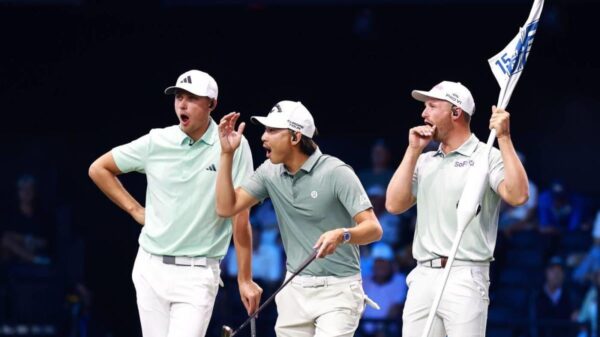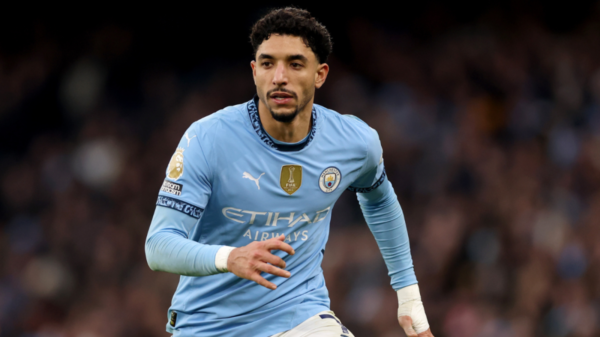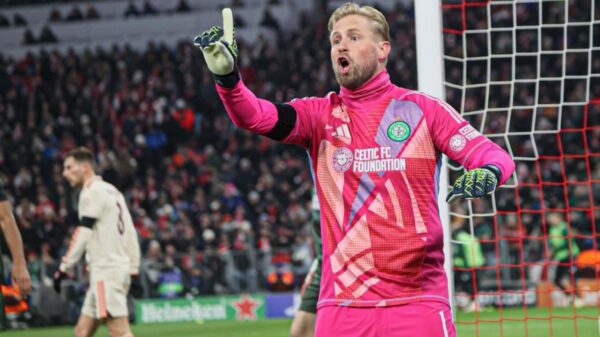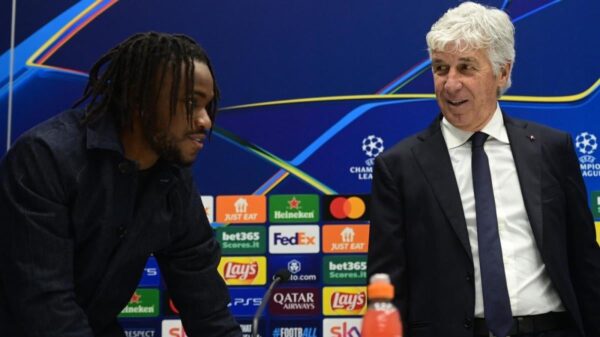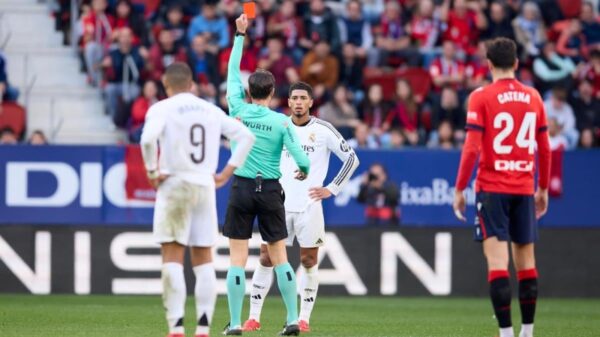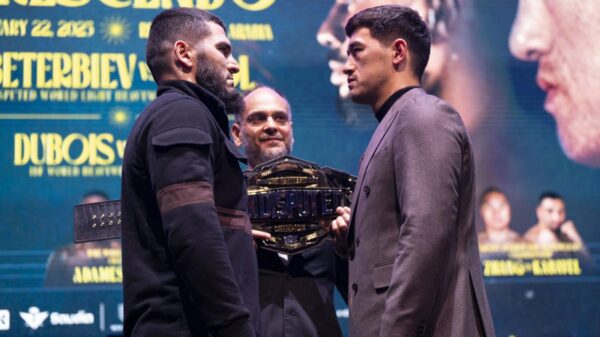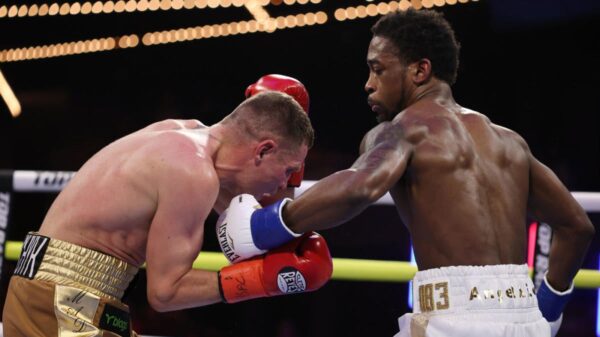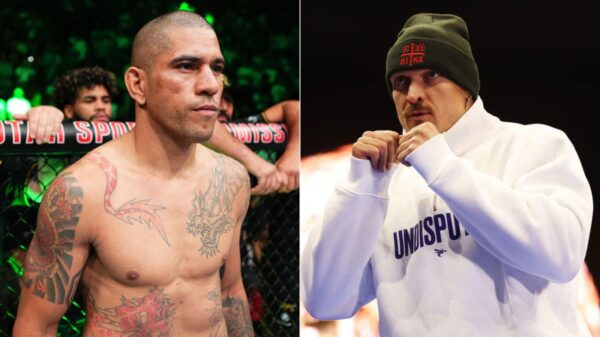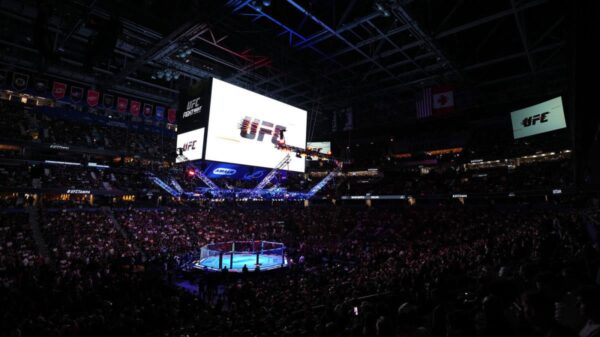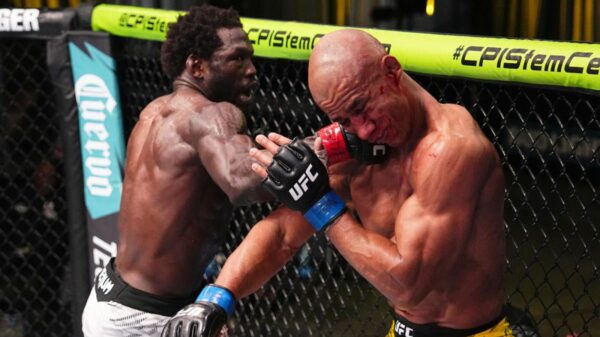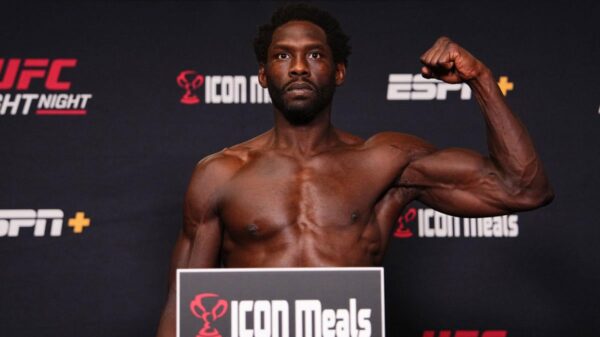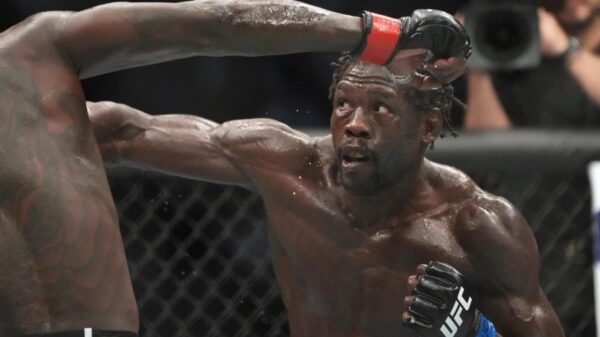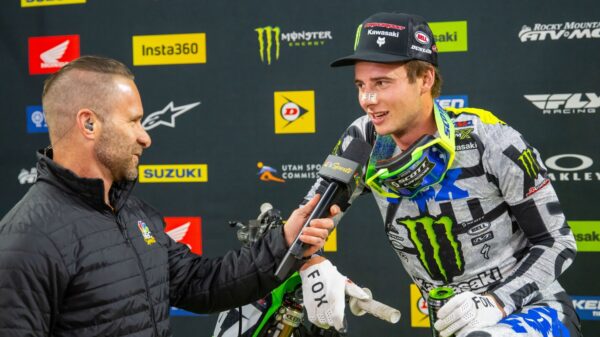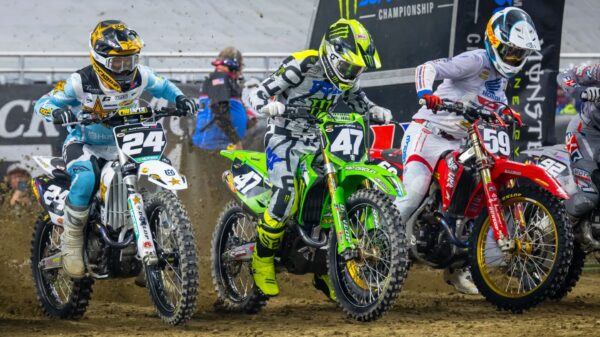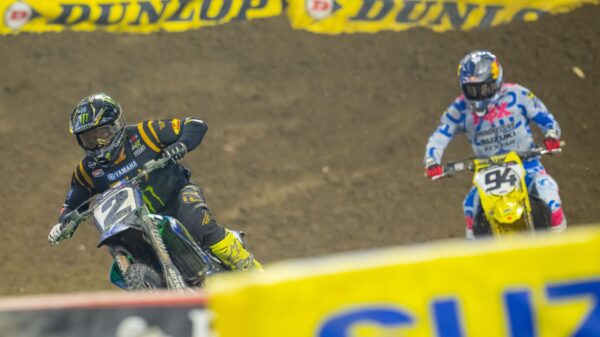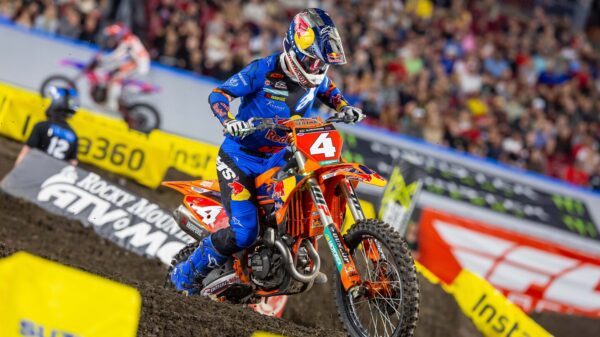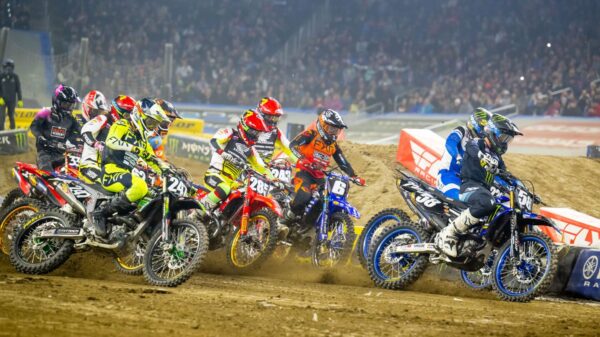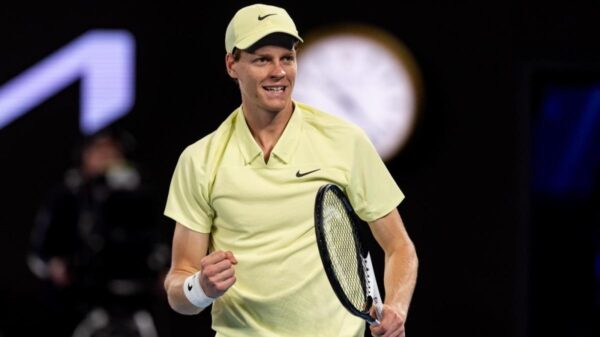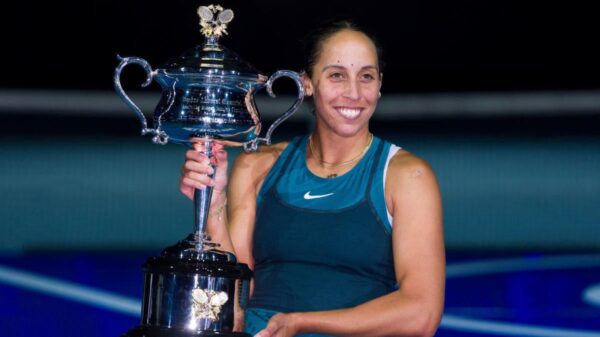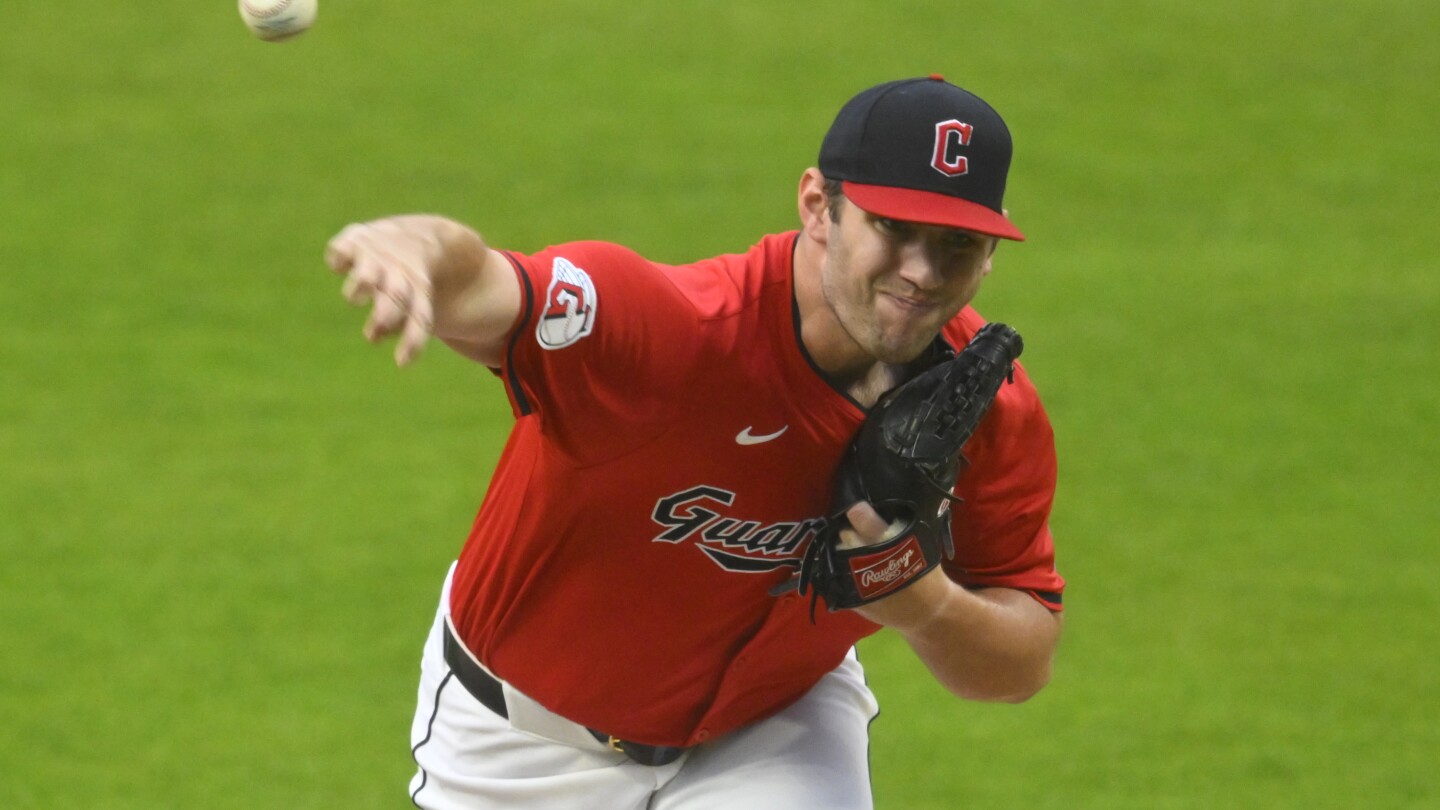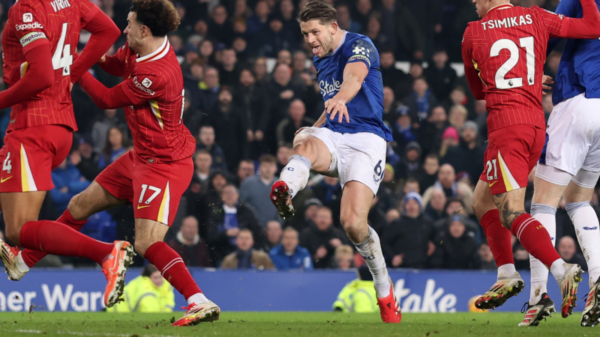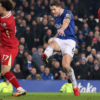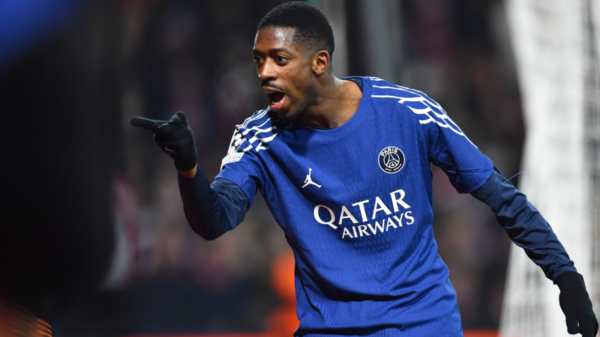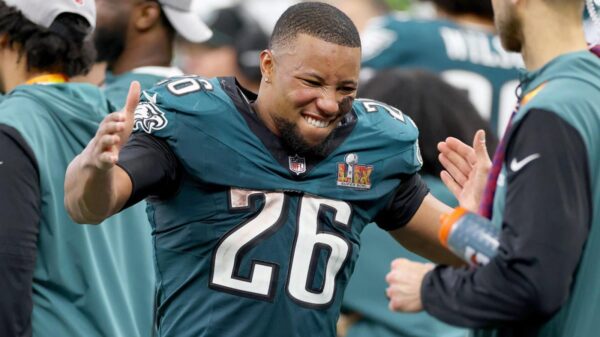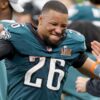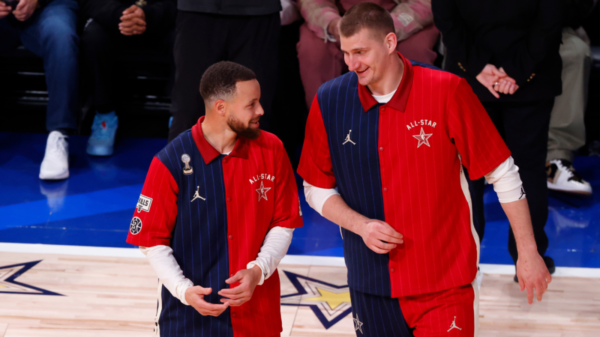Fantasy baseball draft season is kicking into high gear, which means we’re all on the hunt for value. In this article, I’m going to look at some post-hype starting pitchers who I think could provide major value based on where they’re going in drafts. I covered post-hype hitters last week, so you can click here to check that out.
Post-hype here means somebody who was either a top prospect or had considerable buzz in previous seasons but failed to live up to it. They need to have languished in the minors for longer than expected or struggled in an extended major league attempt. Since they’re no longer hyped, they also need to be going outside of the top 200 in current drafts, which means none of these are slam dunks to outproduce their draft value, but they’re guys who I think have a good chance to do so.
RELATED: JORDAN WALKER, TREVOR LARNACH AMONG 2025 POST-HYPE HITTERS
FANTASY BASEBALL POST-HYPE STARTING PITCHERS
NOTE: All ADP data is taken from NFBC Rotowire Online Championship drafts from January 29th to February 13th (12 drafts)
Shane Baz – SP, Tampa Bay Rays (ADP: 174)
Yes, Baz technically doesn’t qualify because he’s inside the top 200 picks, but was also in my February ADP fallers article, so I want to discuss him here because I’m not sure why Shane Baz had his ADP fall. Is it because Drew Rasmussen was announced as a rotation candidate in 2025? Even if the Rays have six solid starters, Baz is almost surely going to be in the rotation. He’s 25 years old and was one of their top prospects before being hurt. Last season in his return to the mound, he posted a 3.06 ERA, 1.06 WHIP, and 69/27 K/BB ratio in 79.1 innings. And that was WITHOUT his best pitch.
Before the injury, Baz featured a wipeout slider that had a 24.3% swinging strike rate (SwStr%) and 36% Ideal Contact Rate. He could throw it for strikes but also whiffs. Last season, that pitch was flatter and with worse command. It posted just an 11% SwStr% but still didn’t give up hard contact. The lack of hard contact is not something we should ignore, but this was previously a nasty pitch, so it’s disappointing to see it return such middling swinging strike rates. Much of that could have to do with his slider losing significant spin; however, since neither the fastball or the curve lost spin, it might have something to do with a grip issue or something Baz needing more time to recapture the feel of that pitch.
Yet, what excited me about Baz is that he responded by making his curve much better in 2024. Not only did the curve register a 16.6% swinging strike rate but it also had a 90th-percentile zone rate, which means it was a pitch that he could command and also gets swings-and-misses on to both righties and lefties. That’s huge. You’ll often hear me say that I want a pitcher to have a fastball he can throw for strikes, a secondary he can throw for strikes, and a secondary he can get whiffs on. Baz has that with just two pitches, which keeps him as a solid starter, but if he uses his off-season to get his slider even close to what it was before the injury, he could be an easy top-30 starter. I have him SP44 right now and will have tons of shares at this price.
Gavin Williams – SP, Cleveland Guardians (ADP: 231)
Gavin Williams battled injuries in 2024 and regressed from his solid 82 innings in his MLB debut in 2023. However, there are a lot of things to like about Williams and I think we’re forgetting that he tore up the minor leagues as the 42nd overall prospect going into the 2023 season. In his 192.1 minor league innings, Williams posted a 2.34 ERA, 1.00 WHIP, and 254 strikeouts. In short, he annihilated the minor leagues.
However, what’s interesting to me is that both William’s slider and curve got great reviews when he was in the minors, but neither has really translated to the majors. He also had an electric fastball that ran up into triple-digits, and while that fastball improved in 2024, there remained some issues. The fastball gained almost one mph in 2024 and he added some horizontal movement to it, which helped it grade out better in Pitcher List’s PLV metric. He also improved the strike rate on the fastball and attacked up in the zone more, which helped the ICR improve to an 85th-percentile mark. The issue is that the four-seamer got hit much harder by right-handed hitters than left-handed hitters and that’s something he still needs to fix.
However, part of what has me interested in Williams is that he introduced a cutter in 2024, but when he started throwing it in July even his coaches weren’t sure if he was actively incorporating a cutter or not getting enough depth on his slider. From August 1st on, he started to lock in a consistent shape threw it nearly 17% of the time. The pitch, like all of Williams’ arsenal, has elite extension with little horizontal break and five inches of drop. He doesn’t yet have great command of it, but it misses bats to both lefties and righties, and he was far better at pounding the strike zone with it against lefties too, where the pitch posted an elite 27% ICR.
So Williams has a four-seamer that is overall solid and has elite extension but carves up lefties more than righties, and he now has a cutter that will miss bats to both lefties and righties. If he can find a better weak contact pitch for righties or maybe attack righties inside more with the four-seamer than he has been, there’s a foundation for him to stifle hitters of both handedness. All of that makes me excited for Williams this season, and the narrative that he’s injury-prone feels off to me because he’s had no elbow surgeries in the past and he threw 115 innings in his first professional season and 142 in his second. As of now, we have no reason to believe last year’s early-season injury will carry over into this season, so expecting 150+ innings from Williams feels entirely feasible.
Eric Samulski ranks his top 150 starting pitchers for the 2025 fantasy baseball season.
Brayan Bello – SP, Boston Red Sox (ADP: 316)
I truly believe this is the year Brayan Bello breaks out. Yes, I did say that last year but this year feels a bit different. For starters, Bello tweaked his slider into more of a sweeper at the end of 2023, then spent most of the offseason working on it, and it graded out as an above-average pitch by PLV in 2024. He also threw the slider nearly 40% of the time to righties after throwing it 22% to righties in 2023, which shows us his increasing trust in the pitch. The swinging strike rate on it jumped from 10% in 2023 to 16% last year, and strike rate went from 54% to 62%, which makes it an average pitch from a command sense. Additionally, the command of the pitch got even better as 2024 went on. From July 1st on, he had a 66% strike rate and a 24.1% K-BB% on it, and the pitch also had a 24% PutAway rate on the season, so it was a good two-strike offering for him. Yes, the slider gives up a higher ICR than we’d like and that led to a 25% HR/FB rate, but it was his first full year throwing the pitch so we should expect improvements in 2025.
So Bello with a good slider was supposed to be a game-changer for him, right? Well, the issue is that as his slider got better, he seemed to lose the feel for his change-up, which has always been his best pitch. Even though he doesn’t throw the changeup often to righties, Bello’s command of the pitch suffered in 2024, with a lower zone and strike rate and it got hit much harder. It still had an 18.5% swinging strike rate to lefties, which means it remains an elite swing-and-miss pitch to opposite-handed hitters, but Bello really needs it to be a strike pitch to righties to complete his arsenal.
The thing is, it always had been that pitch for him, so why can’t we expect it to be that way again? We’ve heard plenty of pitchers mention that the second year they throw a new pitch is usually the year where things start to click a little more because they can often lose feel for a pitch in the middle of the season or spend so much time focusing on the new pitch that they lose feel for an old pitch. As a result, it makes sense to think that Bello’s arsenal will be a bit sharper in 2025. As it stands now, Bello checks the boxes that we want to see in a strong starting pitcher with a fastball for strikes and secondary for whiffs to hitters of each handedness. If he can get the command of his changeup back to be a consistent strike pitch then he has all the things I want from a starting pitcher and we could see a big leap.
Bobby Miller – SP, Los Angeles Dodgers (ADP: 346)
The hype part for Bobby Miller is easy to discuss. He was the 29th overall pick in the 2020 MLB Draft and the 85th-ranked prospect going into the 2023 season. After just four starts in Triple-A in 2023, he was called up to the big leagues where he posted a 3.76 ERA, 1.10 WHIP, and 23.6% strikeout rate in 1241 innings for the Dodgers. He was then drafted as the 21st starting pitcher off the board in NFBC drafts heading into last season. However, 2024 was a disaster season for Bobby Miller. There’s just no way to sugarcoat that, and now the Dodgers rotation is loaded with studs like Tyler Glasnow, Yoshinobu Yamamoto, Shohei Ohtani, Blake Snell, Roki Sasaki, and more. So how can Miller bounceback?
Well, the easy answer is to say that the shoulder and knee injuries that landed Miller on the IL last season were the cause of all of his struggles. If Miller is fully healthy then we’ll see the 2023 version of him, and a spot in the rotation could easily open up because the Dodgers’ pitching staff is littered with guys who have long injury track records.
Of course, the easy answer lacks a bit of nuance, so let’s dig deeper. The biggest culprit appears to be with his four-seam fastball. In 2023, the pitch had a slightly above-league-average 10.6% swinging strike rate, but it also had just a 38.5% ICR, which was 80th percentile among starting pitchers. Yet, in 2024, the pitch got crushed with a nearly 50% ICR and 15.5% barrel rate allowed. Miller still threw the pitch for strikes, but he lost iVB on the pitch, couldn’t get it upstairs and it wound up in the heart of the plate too often. Could the poor command have been a result of his shoulder inflammation? Yes, absolutely. However, a great article in Dodgers Digest broke down some of the mechanical differences that we could see in Miller last year and it’s possible that Miller was flying open too quickly and throwing cross-body, which is what wound up causing the location issues and stressing his shoulder.
That article does a great job addressing the overall poor command that Miller demonstrated in 2024 and suggests that injuries or mechanical issues were far more likely the cause of it than diminished “stuff.” It’s also possible that those same issues were the cause of Miller’s slider taking a step backward. In 2023, the pitch had a 5.53 PLV grade, which was 94th-percentile in baseball, but in 2024 it was thrown one mph slower and with less vertical break, which caused that PLV grade to drop to 5.26, which is essentially a league-average pitch. The pitch missed far fewer bats and was in the strike zone far less often.
You can’t regress severely in two key pitches and expect to have a good season. The good news is that Miller is, allegedly, fully healthy and only 25 years old. If these were mechanical issues, the Dodgers would surely have noticed them. If they were health-related issues, then a full offseason of rest and recovery could have addressed them. Miller will likely begin the year in Triple-A, but if he is back to the pitcher we saw in 2023 and a rotation spot opens up for him for even a brief time, there’s a chance that he kicks the door down and doesn’t leave the rotation again.
Reid Detmers – SP, Los Angeles Angels (ADP: 357)
Earlier this off-season Nick Pollack and I recorded an episode of “On the Corner” where we made a leaderboard of three stats we look at regularly with starting pitchers. We included swinging strike rate, PLV, which is the Pitcher List pitch grading metric that factors in command, and Str-ICR which is a Pitcher List stat that measures how many strikes a pitcher throws and subtracts Ideal Contact Rate (ICR) allowed, meaning that it shows what pitchers throw a lot of strikes and don’t get hit hard. We then looked at the starting pitchers who finished in the top 20% in all categories, the top 25% in all categories, and the top 33% in all categories. A fun fact is that Garrett Crochet was the only pitcher in baseball who finished in the top 10% in all three (draft him with confidence). However, Nick and I were surprised that Reid Detmers finished in the top third in each of those three metrics.
Even in a down year in 2024, Detmers’ swinging strike rate was 85th percentile in baseball among starters, his Str-ICR was 74th percentile, and his PLV was 67th percentile. To me, that says a lot about who Detmers is as a pitcher because even when he’s bad, he shows enough to make you see why we still have hope for him.
One thing I was particularly interested in last year was the change Detmers made to his fastball. In addition to adding extension on the pitch, Detmers added significant iVB, up to 17.1 inches, which is well above average. Considering Detmers likes to throw that fastball up in the zone, the added iVB is nice to see. It might also be part of the reason why the ICR on the pitch dropped from over 47% down to 40%, and the swinging strike rate went up to an 82nd-percentile mark. That gave Detmers an above-average fastball. His slider also had a huge leap in PLV grade in part by reducing the velocity by almost three mph and adding more horizontal break. However, it gets hit hard because he can throw it over the plate consistently, but he doesn’t always bury it at the bottom of the strike zone. Detmers also has the same issue with his curveball, which is up in the zone over 50% of the time.
At the end of the day, Detmers made some intriguing improvements last year and has the arsenal and pitch shapes to be a solid pitcher. He just doesn’t execute them with precision and consistency. Perhaps this is the year it happens. Nothing is telling us for certain that will be the case, but the Angels should start him in the rotation and see if this is finally the year they can get something out of him or trade him. You can draft him late and watch a start or two to see if something has clicked or just move on if it hasn’t.
Presenting this year’s Top 300 rankings for 5×5 fantasy baseball leagues, led by Bobby Witt Jr.
Luis L. Ortiz – SP, Cleveland Guardians (ADP: 363)
Before the 2023 season, Luis L. Ortiz was ranked as the 77th prospect in baseball by Fangraphs, which was a ranking put him just below Tink Hence and Colt Keith and ahead of Gavin Williams and Bryce Miller. You can argue against that all you want, but it tells us there was some prospect pedigree here. The FanGraphs scouting report mentioned that he has an upper-90s fastball that he can “blow by hitters” at the numbers and also has “a nasty upper-80s sweeper that generated a 50% whiff rate and 38% chase rate in 2022.” The report acknowledges some issues with his “sub-optimal fastball shape” but also mentions his improved command and suggests that he could develop to be an impactful starter.
Well, in 2024 he did that, finishing with a 3.32 ERA and 1.11 WHIP in 135.2 innings for the Pirates. It was good enough that the Guardians sought him out in a trade this off-season.
Part of that turnaround for Ortiz was connected to adding a cutter and taking some of the pressure off of that sub-optimal four-seamer. Prior to last year, Oritz had a splits issue, with a .333/.418/.547 triple slash allowed to lefties and just a 13% strikeout rate. His slider still missed bats against lefties, but it got hit hard and his four-seam had just a 6.2% SwStr% to lefties and a brutal 57.4% ICR. He could not succeed by throwing that four-seamer 36% of the time to lefties.
Ortiz could always throw hard, but he struggled to command his four-seamer or his sinker which led to elevated walk rates and lots of hard contact allowed because when they were over the plate, they were usually over the heart of the plate. Having the cutter allows Ortiz to rely less on those two fastballs and use the four-seamer more for whiffs. Last season, he threw the four-seamer inside to lefties way more often, likely because he throws the cutter to similar spots, so he’s now giving lefties two fastballs to think about, which has dropped the ICR against the four-seamer.
The cutter doesn’t miss bats to lefties, so he’s not adding any strikeout value, but he was able to do a good job of limiting the damage he allows and improving those splits issues. It also allows Ortiz to get ahead on lefties more often, which means he’s able to use the slider more in two-strike counts. That slider, which the scouting reports loved simply didn’t get the whiffs it should have, so I’m curious to see if Cleveland can get more out of it because if they can, I think Ortiz is in for a big year. He’s one of my favorite late-round starting pitchers.
Hayden Wesneski – SP, Houston Astros (ADP: 401)
This is the wildest swing here, but Wesneski is also going after pick 400, so the wildness makes some sense. Wesneski was never a top-100 prospect, but he was the 8th-ranked prospect in the Yankees system heading into the 2022 season thanks to a slider and four-seam fastball combination that both got a 60-grade according to MLB Pipeline. After being traded to the Cubs, Wesneski looked good in 2022, but couldn’t build on that momentum and was ultimately moved to the bullpen. This offseason he was traded to the Astros, where he figures to get another chance to start.
That’s the biggest argument in favor of Wesneski bouncing back. He seems to have a huge upper hand on the final rotation spot in the Astros rotation, and the team certainly wanted him as part of their trade package for Kyle Tucker. Wesneski still boasts a great slider that posted an 18.2% swinging strike rate and 39.1% CSW last year with a better-than-average strike rate and a solid 35% ICR allowed.
The issue has been finding anything else that truly works well for him. His once-lauded four-seam fastball is essentially average. It averages 94.5 mph and despite elite extension and poor iVB so is more successful lower in the zone. That leads to solid strike rates but subpar swinging strike rates. It was solid against lefties last year in terms of hard contact allowed to lefties, but righties posted a 45% ICR against it, which is likely why Wesneski used his sinker nearly 20% of the time to righties. The sinker, similarly, did not induce many swinging strikes but did have a much better ICR for right-handed hitters.
So Wesneski has a plus sweeper and an average fastball for righties and an average fastball for lefties, but he’s going to need to find something else for lefties. In 2022, Wesneski had a cutter that posted a 21.2% swinging strike rate to lefties when he threw it 22% of the time, and he also used a changeup 19.3% of the time to lefties with an 18.2% swinging strike rate and 16.7% ICR. These are obviously small sample sizes, but if the Astros can recapture some of the juice from either his cutter or his slider, Wesneski could have both a strike and swinging strike pitch to hitters of both handedness and that would be pretty interesting.
Read the full article here

